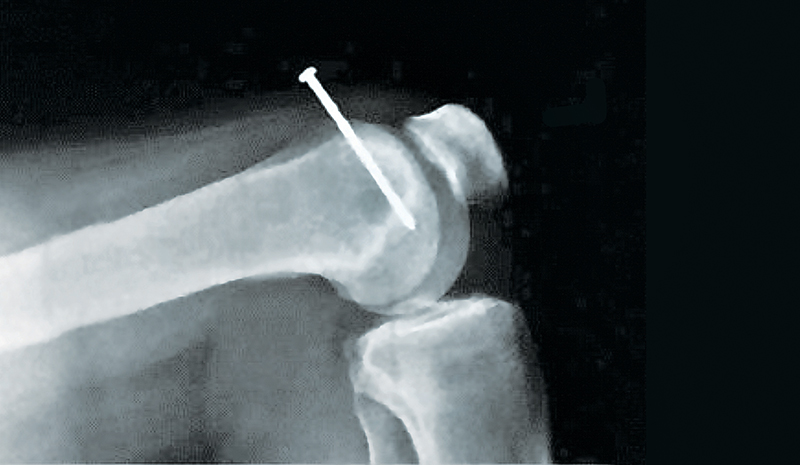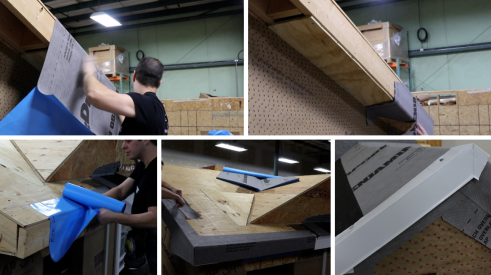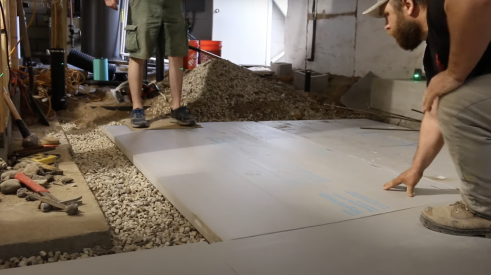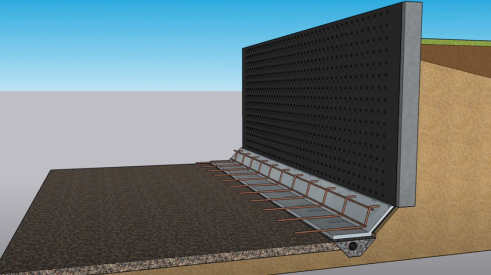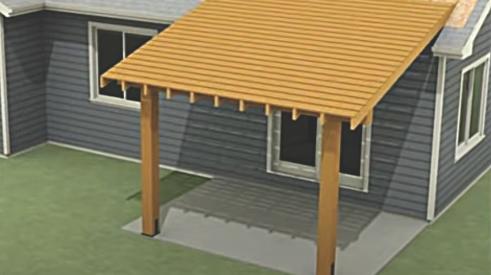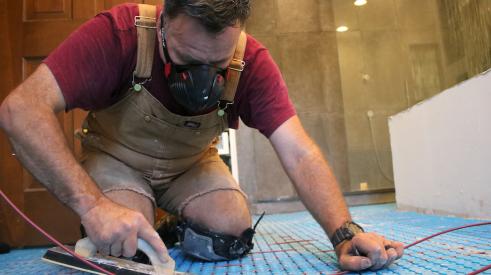The first time Shawn Mahler nailed through bone happened while shooting sole plates into a subfloor. He ran out of hose, so he gave the nail gun a yank. That pulled his hand down, pushing the gun tip into his boot. The result was a nail through the foot—the picture below is the X-ray Mahler got in the emergency room before they yanked the nail. He lost a month of work.
Sequential vs. Contact Triggers
Nail-gun triggers come in two flavors: sequential and contact. With a sequential trigger, the nose piece has to be depressed before the trigger can be pulled, and once a nail is fired, everything resets. By contrast, a contact trigger can be pulled and held, allowing a nail to be driven every time the nose piece “bumps” against the work.
Bump nailing is fast, and for those of us who’ve done it (and who hasn’t?), it’s kind of cool. It’s also dangerous. In fact, contact triggers are involved in twice the number of serious nail-gun injuries as sequential triggers, according to a study from the Duke University Medical Center.
You Can Never Be Too Careful
Caleb Miller had been a carpenter for about 18 months when he had a serious nail-gun accident. He was holding soffit framing in place with one hand, and pulling the contact trigger on his nail gun with the other.
 “I think I got a double fire,” he says in a video produced by the Center for Construction Research and Training (CPWR).
“I think I got a double fire,” he says in a video produced by the Center for Construction Research and Training (CPWR).
Accidental firing from rebound or recoil is perhaps the most common way contact triggers cause injuries. “I thought I had my hand back far enough,” Miller says, “but … I shot my two fingers together.”
One finger came unstuck when he shook his hand, but the nail went clean through the other (photo opposite) and required a visit to the hospital to remove it.
“I didn’t think I’d ever shoot myself,” he says. “I thought I was too careful to shoot myself.”
He’s not alone. According to CPWR, one training program found that 44% of its apprentice carpenters were injured by nail guns before they finished their training.
Just Lucky, I Guess
Nathan Roberts was a carpenter for 10 years, working in states that didn’t have unions or formal training programs. “It was all on-the-job training,” says Roberts. “I never heard of a sequential trigger until I was seven years into my carpentry career.”
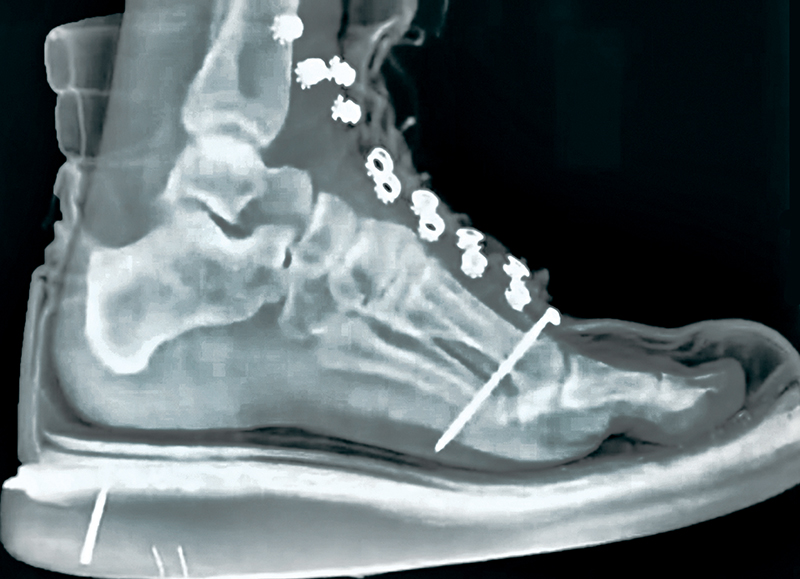 His first nail-gun injury occurred within a year and half of his first carpentry job. He was framing a wall on the subfloor, nailing studs to a top plate, and got a double bump. It missed the plate and nicked the fleshy part of his thumb.
His first nail-gun injury occurred within a year and half of his first carpentry job. He was framing a wall on the subfloor, nailing studs to a top plate, and got a double bump. It missed the plate and nicked the fleshy part of his thumb.
The second incident: “I nailed my foot through the band board to the top plate with a 16d nail.” Flesh wound only.
The third incident: While nailing down with the gun above his head, a nail ricocheted into his forearm. This one got him in the bone.
We’ve all been there. Like Roberts, most of us have worked on jobsites with laissez-faire attitudes toward injury. And like Roberts, we’ve just been lucky. But not everyone is. “I’ve seen people nail three fingers together, through hands, through wrists, into knees, into calves, one through the back of a guy’s head,” says Roberts.
Only his foot injury was treated at the ER: “Duct tape and napkins were our stitches … and we went right back to work,” says Roberts, who didn’t take any time off to heal. “That’s money lost, money out of my pocket that I couldn’t afford to lose.”
He points a finger at the trigger. “I do believe that in two instances, if I had been using sequential triggers, [the injuries] would not have happened.”
Add new comment
Related Stories
How to Weatherize Roof-Wall Intersections
Mitigating moisture between changes of materials and panes requires special attention
3 Steps for Installing House Wrap and a Rainscreen
ProTradeCraft's Building Resilience walks you through how to install a self-adhered house wrap, liquid flash obstructions, and top it off with a rainscreen
How to Insulate a Heated, Structural Slab with XPS
ProTradeCraft's Building Resilience season three starts with making a basement more comfortable
How to Retrofit Foundation Footings
To make a low-height basement a more comfortable living space, this remodeler digs deeper but needs to add support to do so
Crawl Spaces to Basements: Proceed with Caution
Converting a crawl space to other uses can upgrade a home and add significant value, but when done incorrectly, it can also be disastrous
The Ins and Outs of Pedestal Tile Systems
A non-exhaustive overview of all things pedestal tile systems
How to Attach a Patio Roof to an Existing House
Discover expert tips on how to attach a patio roof to an existing house. Elevate your homeowner clients' outdoor living spaces with our comprehensive guide.
6 Tips for Electric Floor Heating Systems
These quick tips and tricks provide a base knowledge to begin your floor heating education
How To Improve Energy Performance in Existing Attics
There’s more to insulating the attic than attic insulation; there’s venting, air sealing, and misery



